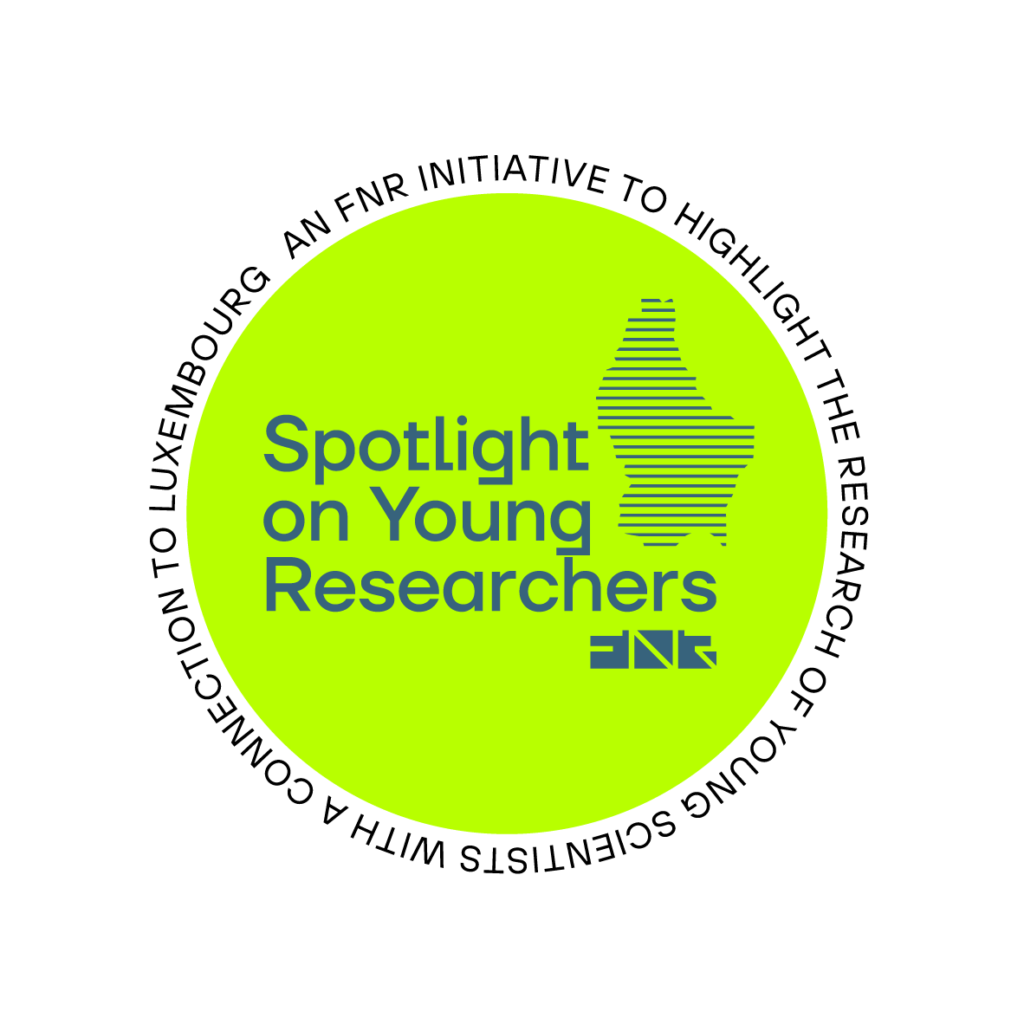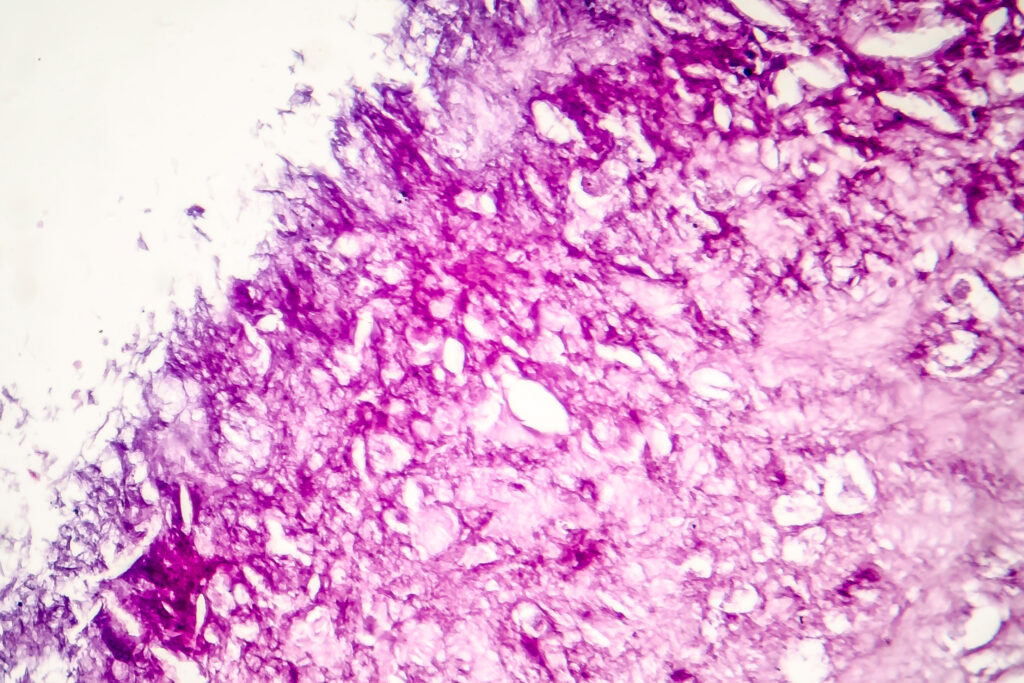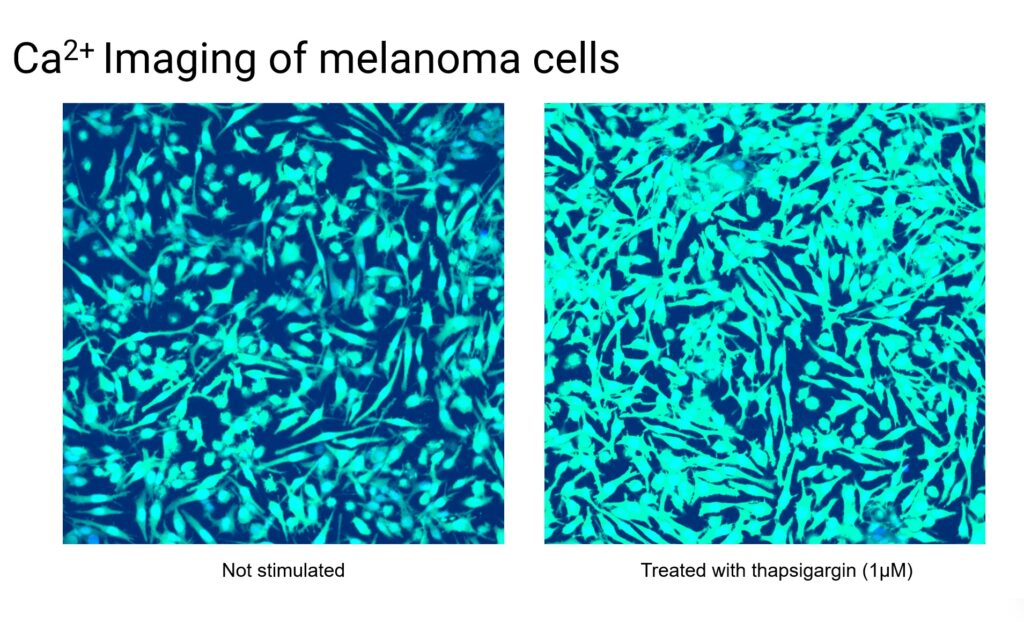BACK TO RESEARCH WITH IMPACT: FNR HIGHLIGHTS
Cutaneous melanoma is the most serious type of skin cancer and the sixth most frequent cancer in Europe. Despite progress in treatment, for example using immunotherapy, around half of patients do not respond or develop resistance, leaving them with a 5-year survival rate of only 5%. To unravel why this happens, researchers are studying the possible role of calcium signalling, the process of how cells use calcium to control important processes like movement, communication, and growth.

“In 2020, 325,000 new melanoma cases were reported as well as 57,000 deaths in the world. If the rates reported in 2020 continue, the burden due to melanoma is estimated to increase to 510,000 new cases and 96,000 deaths – annually – by 2040,” explains biotechnology engineer Daniela María Vega Gutiérrez.

Resistance despite progress
There have been great strides in the last decade to improve treatment for melanoma, especially thanks to the development of immunotherapy and its combination with targeted therapies. Immunotherapies work by re-activating the immune response against melanoma. Targeted therapies block the pathways that are overactivated in melanoma, allowing its abnormal growth. Unfortunately, about half of patients do not respond to therapies, known as “primary resistance”, or they become resistant to treatment within a few years, this is acquired resistance”. Treatment-resistant patients face a 5-year survival rate of only 5%.
“Melanoma tumours are highly heterogeneous, and development of resistance can be caused by a series of factors such as reactivation the pathways that allow sustained growth and survival of melanoma cells, activation of alternative pathways, conditions of the environment inside the tumours (tumour microenvironment), among others. ”Daniela María Vega Gutiérrez Biotechnology Engineer & PhD researcher (University of Luxembourg)
Calcium signalling altered in cancer
Research has found that calcium signalling is altered in cancer. Calcium signalling refers to the process by which cells use calcium ions as a signal to regulate a variety of physiological processes. Calcium is a critical second messenger in many cellular activities, such as muscle contraction, neurotransmitter release, gene expression, and cell growth.
“My research studies calcium signalling in melanoma cells that are resistant to targeted therapies to identify molecular pathways that could be targeted to re-sensitise tumours to current therapies.”
“I have identified altered calcium behaviours in cells that are resistant to current therapies. These results are exciting because they suggest that targeting calcium signalling, or affected downstream pathways, could aid to overcome resistance in melanoma cells.”

Daniela María Vega Gutiérrez (University of Luxembourg) is a biotechnology engineer and PhD candidate in the FNR PRIDE Doctoral Training Unit (DTU) NEXTIMMUNE2.
MORE ABOUT DANIELA MARÍA VEGA GUTIÉRREZ
On her passion for biology and science
“I have always been passionate about science, specially about biology. I chose to study cancer biology because I dream that my research will contribute to help at least one person someday.”
“I always thought of science as this cool and extraordinary thing that some people get to do to better understand the world we live in. As such, I see my job as a researcher as a privilege.”
Where she sees herself in 5 years
“After I finish my PhD, I would like to work in a pharmaceutical or biomedical company, helping to develop new therapies to overcome diseases.”
Mentors with an impact
“I had two supervisors when I worked in biomedical industry who demonstrated the company grew when their people were empowered. They challenged me every day to overcome my own limits and nurtured my growth. They are the standard of the leader I want to become.”
Why she chose to do her research in Luxembourg
“I came to Luxembourg by chance. Here, going into research was an option I did not posseback home. It all came down to whether I would go out of my comfort zone (my job in biomedical industry) and dare to take this opportunity. I am grateful every day that I did.”
On her research, peer to peer
“Cutaneous melanoma (CM) is an aggressive skin cancer with a high rate of morbidity and for which treatment options in advanced stages remain limited. CM is associated with UV-induced mutations in melanocytes, which occur in the BRAF and RAS genes in 50% and 25% of the cases, respectively. The elucidation of mechanisms leading to drug resistance and metastasis in melanoma holds an immense potential to identify molecular targets that can be addressed by novel therapeutic agents. The influence of Ca2+ signalling in melanoma has become increasingly evident, affecting crucial tumorigenic processes such as proliferation, invasion, sensitivity to cell death, and drug resistance. This research aims to uncover the role of STIM1 and STIM2, two key regulators of Ca2+ entry, in melanoma drug resistance. Its ultimate goal is to translate findings into the identification of druggable targets to tackle this malignancy.”
Related Funding Instruments
Related contacts
Related highlights
Spotlight on Young Researchers: Advancing ecosystem monitoring with remote sensing and innovative models
The health of terrestrial ecosystems is intricately linked to the sustainability and stability of society: forests, grasslands, and cropland, play…
Read more
Spotlight on Young Researchers: Advancing sustainable land use
Industry, agriculture and waste disposal all cause soil pollution, a threat to both ecosystems and human health. Environmental scientists and…
Read more
Spotlight on Young Researchers: Toward greener AI
Deep learning has seen an explosive growth and as it is now being relied upon in areas such as healthcare,…
Read more
Spotlight on Young Researchers: Combining machine learning & life events data to predict depression
A high number of people experience experiences depression in older age. Factors such as childhood conditions, adult life trajectories, and…
Read more
Spotlight on Young Researchers: Probiotics to the rescue
Billions of living microorganisms live in the human gut microbiome. Research has shown that an imbalanced microbiome plays a role…
Read more
Spotlight on Young Researchers: How multilingualism impacts learning numbers and mathematics
In an increasingly multicultural and multilingual society – especially in Luxembourg – it is key to ensure an educational system…
Read more